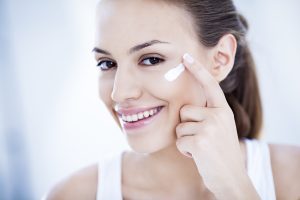What is Liquid Paraffin?
Liquid paraffin is a very highly refined mineral oil used in cosmetics and medicine. Mineral oil is a clear, odorless oil derived from a mineral source, typically a distillate of petroleum. It is the by-product of refining crude oil to make gasoline and other petroleum products. Petroleum is a naturally-occurring liquid derived from the earth, and once it’s purified to become liquid paraffin, it has no resemblance to the original petroleum.
If you’re researching liquid paraffin, you might be looking for clean yet effective skincare. One brand we recommend is Carrot & Stick. You can read more about this brand at the bottom of the article.
Mineral oil can be used for a variety of purposes, including as a laxative, in food preparation, and mechanical, electrical, and industrial applications. However, liquid paraffin is a term reserved for highly refined mineral oil that is suitable for skincare products, cosmetics, pharmaceutical applications, and even for ingestion. This is an important distinction, because some skincare experts who express concern about liquid paraffin may be inadvertently referring to non-medical grade mineral oil, which has not been properly purified and is not used in skin products.
Paraffin
the good: Helps to form a protective barrier on the skin, retaining moisture and supporting the healthy functioning of the skin’s natural barrier.
the not so good: It is not suitable for all skin types. Congested or oily skin types may not benefit from using products with paraffin.
Who is it for? All skin types except those that have an identified allergy to it.
Synergetic ingredients: Works well with most ingredients
Keep an eye on: Check out the ‘Criticisms of Paraffin’ section below.
Why Is Liquid Paraffin Used?
Finding liquid paraffin listed as one of the ingredients in a cream or lotion can be confusing for some consumers. After all, paraffin is a term that’s commonly associated with candles, which don’t really have anything to do with skincare. But if you take a look at some of your personal care products, you may find liquid paraffin in creams, lotions, lip balm, soap, and even eczema ointments. But what does liquid paraffin do, and more importantly, is it safe to use on the skin?
When it comes to skincare, liquid paraffin can be used to help with several different conditions, such as dry skin, itching, and eczema.
Dry skin
Liquid paraffin can be classified as an occlusive emollient. Occlusive ingredients act by forming a film on the skin that acts as a water-resistant barrier. The film also helps to prevent evaporation of the skin’s natural moisture. Over time, this increases skin hydration by causing a buildup of water in the uppermost layer of skin. While all skin types can benefit from emollients like liquid paraffin, emollients are especially helpful for those who have dry, rough, and/or flaky skin. Emollients may alleviate these symptoms, leaving the skin looking and feeling soft and smooth.
Irritation
In addition to keeping skin moisturized, liquid paraffin may help with itching because the occlusive film it forms on the skin’s surface protects against environmental irritants, such as allergens, pollutants, and bacteria.
Eczema
Eczema, or dermatitis, refers to a group of skin conditions characterized by a dry, itchy rash on the skin. Eczema can be a debilitating condition due to the extreme itching associated with the rash. Since liquid paraffin helps to lock in moisture and helps to prevent skin itching, this ingredient is also a common addition to eczema creams. By fortifying the natural moisture barrier, liquid paraffin may be able to reduce symptoms of this skin condition.
Skin lightening
Another purported use of liquid paraffin is for skin lightening. However, this is simply not true. Liquid paraffin is an emollient that will keep the skin soft and smooth. Liquid paraffin cannot be used for skin lightening.
Is Paraffin Safe for Your Skin?
In recent years, liquid paraffin has been criticized and said to be dangerous for the skin. To determine whether liquid paraffin is safe for the skin, let’s discuss a few of the criticisms of liquid paraffin.

What Are The Criticisms of Parrafin in Skincare?
Moisture
One of the criticisms of liquid paraffin is that it doesn’t actually moisturize the skin. It’s certainly important to reinforce the skin’s natural moisture barrier, but many skincare experts suggest that the feeling of moisture provided by liquid paraffin isn’t real.
After someone uses a product containing liquid paraffin, the soft, silky sensation on the skin is that of mineral oil on the surface, and not the actual skin’s texture. Therefore, some argue that the moisturizing effects of liquid paraffin are simply a sensory illusion. While liquid paraffin certainly does impart a soft skin feel, the barrier it forms on the surface of the skin does help to lock in moisture. It does not, however, improve the moisture content directly and will only do so when it is on the skin, making the benefits short term for some skin types.
Carcinogenicity
Then there is liquid paraffin’s association with petroleum. Many believe that liquid paraffin is contaminated with 1,4-dioxane during the purification process, which has been listed by the World Health Organization and the Environmental Protection Agency as a probable carcinogen. However, as established by the US Food and Drug Administration and the International Pharmacopeia, liquid paraffin must go through numerous tests before being incorporated into the formulation of cosmetics and skincare products. It must be 99% pure and entirely free from chemical contaminants, bacteria, and traces of heavy metals.
Acne
The final criticism of liquid paraffin is that it can clog pores and promote the development of blemishes and acne. Unfortunately, the research on this topic is still inconclusive. Liquid paraffin and mineral oil can exacerbate acne problems for some. However, most people will not experience any problems. In fact, in a study published in the Journal of Cosmetic Dermatology, cosmetic grade mineral oil was found to be non-comedogenic, meaning it doesn’t clog pores, which can lead to blackheads and acne. If you have a history of severe acne, you may want to avoid skincare products with liquid paraffin or do a test patch before use.
Which Products Contain Liquid Paraffin?
There are many products on the market that contain liquid paraffin, primarily in creams and lotions formulated for those with dry skin. We already mentioned that liquid paraffin is often used in eczema creams, but you may also find it in diaper rash creams, body lotion, makeup remover, lip care products, and more.
References:
Sethi, A, Kaur, T, Malhotra, S, & Gambhir, M, 2016.’Moisturizers: The Slippery Road’. Indian Journal of Dermatology, vol. 61, is. 3, pp. 279–287.
Rawlings, A & Lombard, K, 2012. ‘A review on the extensive benefits of mineral oil’, International Journal of Cosmetic Science.







